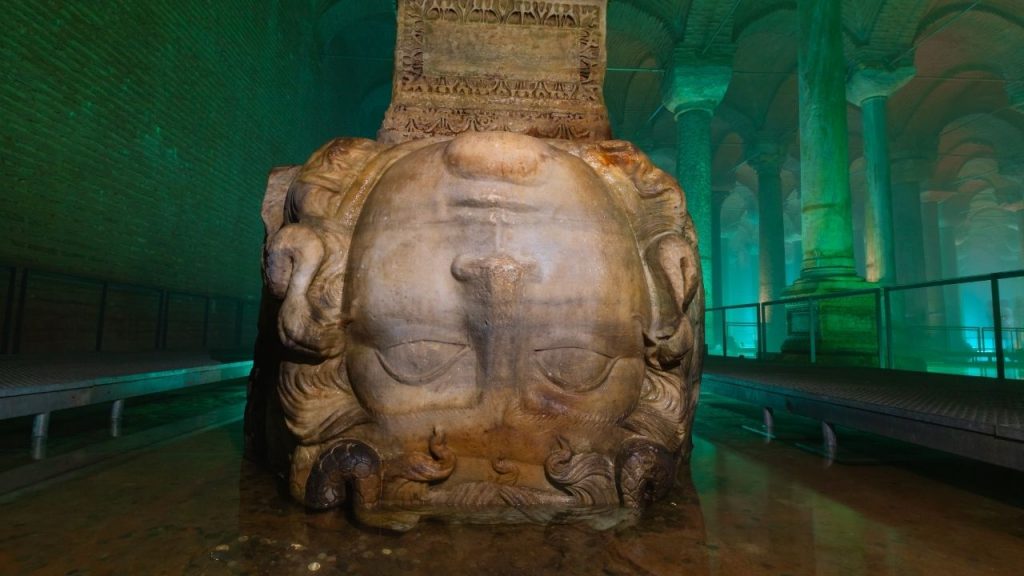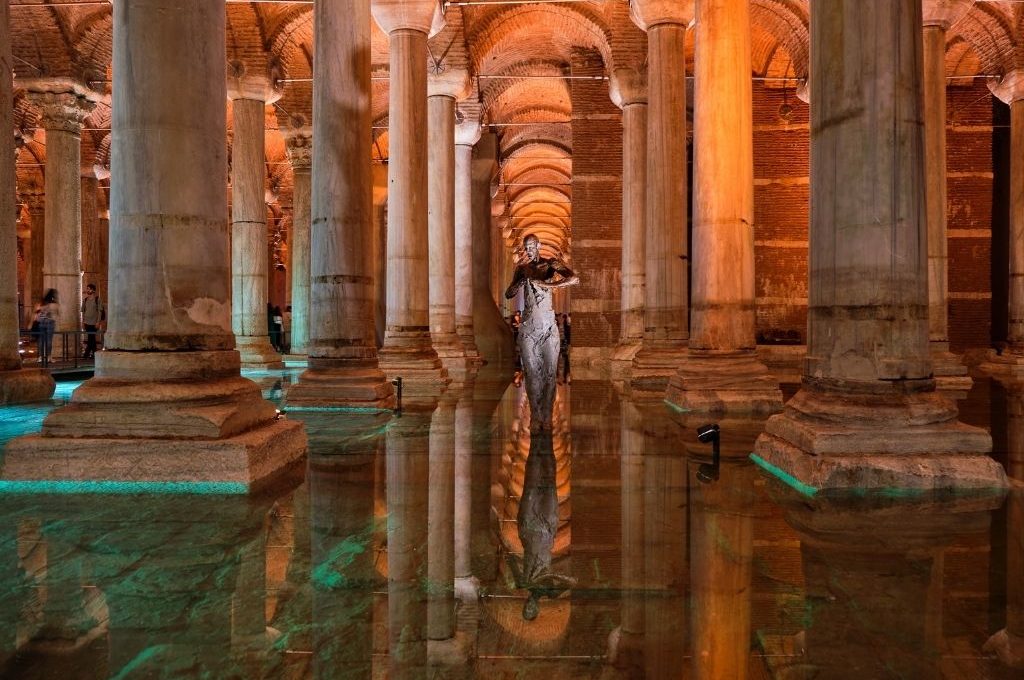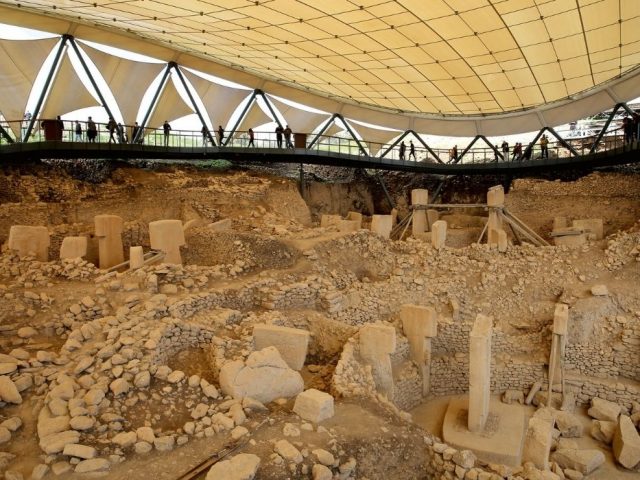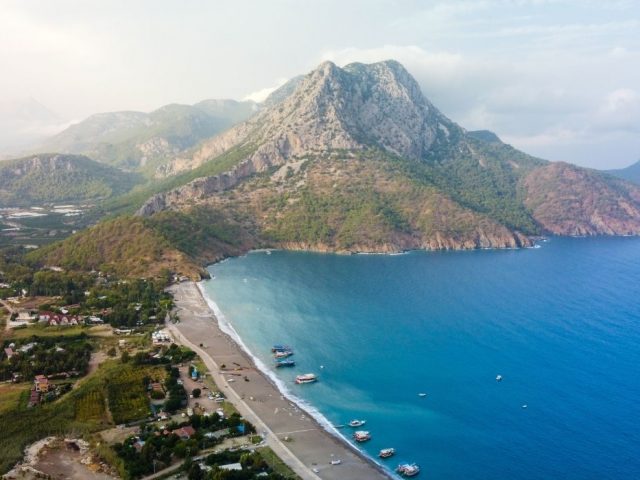Imagine magnificent architecture in the heart of Istanbul, and it’s even the same age as Hagia Sophia!
Yes, we’re talking about the Basilica Cistern. It’s one of the most interesting and popular tourist attractions in Istanbul, and even in Turkey. Not only foreign or domestic tourists from different parts of Turkey visit here, but also many locals come to see the Basilica Cistern in its current state every day.
The Basilica Cistern has even found a place in popular culture. Readers of Dan Brown’s novel “Inferno” will understand. This structure was recreated on a film set in Budapest, where Tom Hanks also starred in the film. So, what you see in the movie is not the original Basilica Cistern, but a replica.
🛎️ Reminder: To explore the Basilica Cistern step by step with your digital tour guide, don’t forget to download Piri Guide! 😊
Where is the Basilica Cistern?
Basilica Cistern is in the part of Istanbul known as the Old City or Historical Peninsula. As we mentioned earlier, it was built at the same time as Hagia Sophia. These two important historical sites are also located in the same area. The Basilica Cistern is located right next to Hagia Sophia.
How to Go to the Basilica Cistern?
To reach the cistern, you can use the tram, bus, or ferry. You will need to take the tram from Eminönü and get off at Sultanahmet. The bus lines that pass through or near Eminönü are as follows: 28, 32, 46Ç, 47K, 66, 78, 79GE. For those on the Anatolian side of Istanbul, we recommend not missing out on a beautiful ferry ride.
🚨A little warning: Make sure to wear comfortable and non-slip shoes when visiting the Basilica Cistern. 👟
History of the Basilica Cistern
We’ve talked about the history of the Basilica Cistern of Istanbul. Yet, we should remind you that you can find more on Piri Guide mobile app. Piri Guide detects your location, offers you the best travel routes, and starts telling you the hidden stories of wherever you are. All you have to do is to get your headphones or earbuds and follow the path at your own pace. Then, don’t set out for your trip before downloading the digital travel guide! 😊
More than Just a Cistern

More than just a cistern, the Basilica Cistern almost resembles a palace. It is truly one of the most beautiful and valuable structures that display Istanbul’s long history.
The Basilica Cistern was built in the 6th century during the reign of Emperor Justinian I. It was designed to provide a reliable water supply to Constantinople, which was still growing into the city we know today. Many of the columns in the cistern are highly intricate and detailed carvings. In fact, one of them has the face of a well-known figure: Medusa. It is believed that the Medusa Head in the Basilica Cistern was used to protect against evil spirits.
The Basilica Cistern has a total of 336 columns. The reason the cistern was built in this location is that people thought this area would be submerged and that nobody would see it. They decided to use as many columns as possible, and thus, this magnificent structure was born. You will notice that the column capitals, sizes, and styles differ from each other because so many columns were used. Some of them are in the Corinthian order, while others are in the plain Doric style.
The Purpose of the Basilica Cistern
Istanbul has been one of the most desirable cities for centuries. To destroy the city from within, enemies used to poison the water. Therefore, important precautions were taken next to the water aqueducts and cisterns. Fish were put into the Basilica Cistern, and if they died, people knew that the water was poisonous. Until recent years, the fish were still swimming, but they were removed from the cistern due to restoration work by the Istanbul Metropolitan Municipality.
In 1987, the path inside the cistern was completely cleaned, and it now has an area where events can be held. You may wonder how the water inside the Basilica Cistern doesn’t overflow. The water level is kept constant, and once it reaches a certain point, the excess water is drained.
The Source of the Water
The Basilica Cistern, which holds 10 million cubic meters of water, is a testament to the ingenuity of Roman engineers. Since coal is the best method of water purification, there used to be coal on top of the red-brick domes in the upper section. When it rained from above, rain or underground water would filter down and return as richness to this place. So, as you can understand, the water source of the Basilica Cistern is not only the water flowing through the aqueducts from the Belgrade Forest but also rainwater and underground water that filtered down into it.
The Head of Medusa

The Heads of Medusa were discovered during the restoration work in 1987. There are not just one, but two Medusa heads in the Basilica Cistern. One is upside down, and the other is lying on its side. The exact reason why they are here or why they were placed in this way is not known for certain, but there are some guesses.
According to archaeologists, Medusa heads were a symbol of paganism, and they were placed here because the cistern was built during a time when it was a Christian empire. They may have been thrown here, thinking that they would be underwater, and people wouldn’t be able to see them.
Another theory suggests that they were placed here to protect the cistern. Medusa was like a talisman for the Byzantines, and they believed that it would protect them from evil spirits.
And of course, some believe that they were placed here for purely practical reasons. According to this theory, the location where the Medusa heads are located was the last part of the cistern to be completed. When they ran out of columns, they had to find a platform to put them on in the lower part. That is why they placed the Medusa heads in this manner to find the correct angle.
Since you are here, don’t forget to check out our Historical Peninsula of Istanbul Travel Guide! 😊




